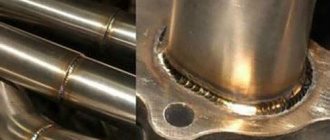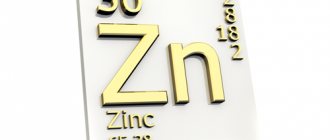Properties of argon (gas) at different temperatures
The table shows the thermophysical properties of argon in the gaseous state at normal atmospheric pressure depending on temperature.
The properties of argon in the table are indicated at temperatures from 0 to 600 °C.
As can be seen from the table, with increasing temperature, the values of such properties of argon as density and Prandtl number decrease, while thermal conductivity, viscosity and thermal diffusivity, on the contrary, increase.
For example, at a temperature of 273K (0°C), the thermal conductivity of argon is 0.0165 W/(m deg), and at a temperature of 600°C, the thermal conductivity of argon increases to a value of 0.0394 W/(m deg).
The table shows the following gas properties:
- argon density, kg/m3;
- specific (mass) heat capacity, kJ/(kg deg);
- thermal conductivity coefficient, W/(m deg);
- dynamic viscosity, Pa s;
- thermal diffusivity, m2/s;
- kinematic viscosity, m2/s;
- Prandtl number.
Note: Be careful! The thermal conductivity of gas in the table is indicated to the power of 102. Don’t forget to divide by 100!
Application
Argon Applications:
- in argon lasers
- in incandescent lamps and when filling the internal space of double-glazed windows
- as a protective medium when welding (arc, laser, contact, etc.) both metals and non-metals
- as a plasma generator in plasmatrons for welding and cutting
- in the food industry, argon is registered as a food additive E938, as a propellant and packaging gas
- as a fire extinguishing agent in gas fire extinguishing installations
Biological role
Argon plays no biological role.
Physiological action
Inert gases have a physiological effect, which is manifested in their narcotic effect on the body. The narcotic effect of inhaling argon appears only at barometric pressure above 0.2 MPa. High concentrations of argon in the inhaled air can cause dizziness, nausea, vomiting, loss of consciousness and death from asphyxia (as a result of oxygen starvation).
Mendeleev's periodic table of chemical elements
Classification of chem. elements, establishing the dependence of various properties of elements on the charge of the atomic nucleus. The system is a graphic expression of the periodic law/
Periodic table of elements
| I.A. | IIA | IIIB | IVB | VB | VIB | VIIB | —- | VIIIB | —- | I.B. | IIB | IIIA | IVA | V.A. | VIA | VIIA | VIIIA | |
| Period | ||||||||||||||||||
| 1 | 1H Hydrogen | 2 He Helium | ||||||||||||||||
| 2 | 3 Li Lithium | 4 Be Beryllium | 5 B Boron | 6 C Carbon | 7 N Nitrogen | 8 O Oxygen | 9 F Fluorine | 10 Ne Neon | ||||||||||
| 3 | 11 Na Sodium | 12 Mg Magnesium | 13 Al Aluminum | 14 Si Silicon | 15 P Phosphorus | 16 S Sulfur | 17 Cl Chlorine | 18 Ar Argon | ||||||||||
| 4 | 19 K Potassium | 20 Ca Calcium | 21 Sc Scandium | 22 Ti Titan | 23 V Vanadium | 24 Cr Chrome | 25 Mn Manganese | 26 Fe Iron | 27 Co Cobalt | 28 Ni Nickel | 29 Cu Copper | 30 Zn Zinc | 31 Ga Gallium | 32 Ge Germanium | 33 As Arsenic | 34 Se Selenium | 35 Br Bromine | 36 Kr Krypton |
| 5 | 37 Rb Rubidium | 38 Sr Strontium | 39 Y Yttrium | 40 Zr Zirconium | 41 Nb Niobium | 42 Mo Molybdenum | (43) Tc Technetium | 44 Ru Ruthenium | 45 Rh Rhodium | 46 Pd Palladium | 47 Ag Silver | 48 Cd Cadmium | 49 In Indium | 50 Sn Tin | 51 Sb Antimony | 52 Te Tellurium | 53 I Iodine | 54 Xe Xenon |
| 6 | 55 Cs Cesium | 56 Ba Barium | * | 72 Hf Hafnium | 73 Ta Tantalum | 74 W Tungsten | 75 Re Rhenium | 76 Os Osmium | 77 Ir Iridium | 78 Pt Platinum | 79 Au Gold | 80 Hg Mercury | 81 Tl Thallium | 82 Pb Lead | 83 Bi Bismuth | (84) Po Polonium | (85) At Astatine | 86 Rn Radon |
| 7 | 87 Fr Franc | 88 Ra Radium | ** | (104) Rf Rutherfordium | (105) Db Dubnium | (106) Sg Seaborgium | (107) Bh Borium | (108) Hs Khassiy | (109) Mt Meitnerium | (110) Ds Darmstadtium | (111) Rg X-ray | (112) Cp Copernicium | (113) Uut Ununtriy | (114) Uuq Ununquadium | (115) Uup Ununpentius | (116) Uuh Unungexium | (117) Uus Ununseptius | (118) Uuo Ununoctium |
| 8 | (119) Uue Ununenniy | (120) Ubn Unbinilium | ||||||||||||||||
| Lanthanides* | 57 La Lantan | 58 Ce Cerium | 59 Pr Praseodymium | 60 Nd Neodymium | (61) Pm Promethium | 62 Sm Samaria | 63 Eu Europium | 64 Gd Gadolinium | 65 Tb Terbium | 66 Dy Dysprosium | 67 Ho Golmi | 68 Er Erbium | 69 Tm Thulium | 70 Yb Ytterbium | 71 Lu Lutetium | |||
| Actinoids** | 89 Ac Actinium | 90 Th Thorium | 91 Pa Protactinium | 92U Uranium | (93) Np Neptunium | (94) Pu Plutonium | (95) Am Americium | (96) Cm Curium | (97) Bk Berkelium | (98) Cf Californian | (99) Es Einsteinium | (100) Fm Fermium | (101) Md Mendelevium | (102) No Nobels | (103) Lr Lawrence | |||
Chemical families of periodic table elements
| Alkali metals | Alkaline earth metals | Lanthanides | Actinoids | Transition metals |
| Light metals | Semimetals | Nonmetals | Halogens | Noble gases |
Density of argon at various temperatures and pressures
The table shows the densities of argon in the gaseous state at various temperatures and pressures. The density of argon in the table is indicated at temperatures from -203 to 4727 °C and pressure from 0.01 to 1013 atmospheres.
According to the table, at a pressure of 507 atmospheres and a temperature of -173 °C, argon gas has a maximum density of 1430 kg/m3 . The minimum argon density is achieved at a vacuum of 0.01 atm. and a temperature of 4727 °C (density is 0.00097 kg/m3).
Thermal conductivity of argon at different temperatures
The table shows the thermal conductivity of argon in the gaseous state at normal atmospheric pressure depending on temperature. Thermal conductivity in the table is indicated at temperatures from 90 to 2000 K.
It follows from the table that the thermal conductivity of argon in the gaseous state at normal atmospheric pressure (1 bar) also increases with increasing temperature and reaches a value of 0.0667 W/(m deg) at 2000 K. Note: Be careful! The thermal conductivity of argon is given to the power of 103. Don't forget to divide by 1000!
History of discovery
The history of the discovery of argon begins in 1785, when the English physicist and chemist Henry Cavendish, studying the composition of air, decided to determine whether all the nitrogen in the air was oxidized.
The further history of the discovery of argon is associated with the name of Rayleigh, who devoted several years to studying the density of gases, especially nitrogen.
The already famous English chemist William Ramsay also did not have a ready answer, but he offered Rayleigh his cooperation. Intuition prompted Ramsay to suggest that the nitrogen in the air contains admixtures of an unknown and heavier gas, and Dewar drew Rayleigh’s attention to the description of Cavendish’s ancient experiments (which had already been published by this time).
Spectral analysis played a major role in the study of the new gas. The spectrum of the gas released from the air, with its characteristic orange, blue and green lines, was sharply different from the spectra of already known gases. William Crookes, one of the most prominent spectroscopists of that time, counted almost 200 lines in its spectrum. The level of development of spectral analysis at that time did not make it possible to determine whether the observed spectrum belonged to one or more elements. A few years later, it turned out that Ramsay and Rayleigh were holding in their hands not just one stranger, but several - a whole galaxy of inert gases.
On August 7, 1894, in Oxford, at a meeting of the British Association of Physicists, Chemists and Naturalists, a report was made on the discovery of a new element, which was named argon.
Thermal conductivity of argon in the gaseous state at high temperatures
The table shows the thermal conductivity of argon in the gaseous state at normal atmospheric pressure at high temperatures. Thermal conductivity in the table is given at temperatures from 1500 to 5000 K (from 1227 to 4727 °C).
The table shows that the thermal conductivity of argon at high temperatures also increases with increasing temperature and is equal to 0.131 W/(m deg) at 5000 K. Note: Be careful! Thermal conductivity is given to the power of 103. Don't forget to divide by 1000!
Page 3: GOST 10157-79. Argon gaseous and liquid. Specifications (41816)
1.662 — density of argon gas under normal conditions, kg/m3;
1.392 - density of liquid argon at normal pressure, kg/dm3.
Coefficient (K) for calculating the volume of gas in a cylinder in m3 under normal conditions of 20 °C and 101.3 kPa (Hg)
| Gas temperature in the cylinder, °C | Excessive gas pressure in the cylinder, MPa (kgf/cm2) | |||||||||||
| 9,8 | 11,8 | 13,7 | 14,2 | 14,7 | 15,2 | 15,7 | 16,2 | 16,7 | 17,7 | 19,6 | 21,6 | |
| (100) | (120) | (140) | (145) | (150) | (155) | (160) | (165) | (170) | (180) | (200) | (220) | |
| -50 | 0,157 | 0,193 | 0,231 | 0,240 | 0,249 | 0,258 | 0,267 | 0,276 | 0,284 | 0,300 | 0,331 | 0,363 |
| -40 | 0,145 | 0,178 | 0,211 | 0,219 | 0,227 | 0,236 | 0,243 | 0,251 | 0,259 | 0,274 | 0,303 | 0,333 |
| -35 | 0,140 | 0,171 | 0,203 | 0,211 | 0,218 | 0,226 | 0,234 | 0,241 | 0,248 | 0,263 | 0,291 | 0,319 |
| -30 | 0,135 | 0,165 | 0,195 | 0,203 | 0,210 | 0,217 | 0,224 | 0,232 | 0,239 | 0,253 | 0,280 | 0,307 |
| -25 | 0,131 | 0,159 | 0,188 | 0,195 | 0,202 | 0,209 | 0,216 | 0,223 | 0,230 | 0,243 | 0,269 | 0,296 |
| -20 | 0,127 | 0,154 | 0,181 | 0,188 | 0,195 | 0,202 | 0,209 | 0,215 | 0,222 | 0,235 | 0,259 | 0,285 |
| -15 | 0,123 | 0,149 | 0,175 | 0,182 | 0,189 | 0,195 | 0,202 | 0,208 | 0,215 | 0,227 | 0,252 | 0,276 |
| -10 | 0,120 | 0,145 | 0,170 | 0,177 | 0,183 | 0,189 | 0,195 | 0,202 | 0,208 | 0,220 | 0,243 | 0,267 |
| -5 | 0,116 | 0,141 | 0,165 | 0,171 | 0,178 | 0,184 | 0,190 | 0,196 | 0,202 | 0,213 | 0,236 | 0,260 |
| 0 | 0,113 | 0,137 | 0,161 | 0,167 | 0,173 | 0,178 | 0,184 | 0,190 | 0,196 | 0,207 | 0,229 | 0,252 |
| +5 | 0,110 | 0,134 | 0,157 | 0,162 | 0,168 | 0,174 | 0,179 | 0,185 | 0,190 | 0,201 | 0,223 | 0,245 |
| +10 | 0,108 | 0,132 | 0,153 | 0,158 | 0,164 | 0,169 | 0,175 | 0,180 | 0,185 | 0,196 | 0,217 | 0,238 |
| +15 | 0,105 | 0,128 | 0,149 | 0,154 | 0,159 | 0,165 | 0,170 | 0,175 | 0,181 | 0,191 | 0,212 | 0,232 |
| +20 | 0,103 | 0,124 | 0,145 | 0,150 | 0,155 | 0,161 | 0,166 | 0,171 | 0,176 | 0,186 | 0,206 | 0,227 |
| +25 | 0,101 | 0,121 | 0,142 | 0,147 | 0,152 | 0,157 | 0,162 | 0,167 | 0,172 | 0,182 | 0,201 | 0,221 |
| +30 | 0,099 | 0,119 | 0,139 | 0,144 | 0,149 | 0,154 | 0,158 | 0,163 | 0,168 | 0,178 | 0,196 | 0,216 |
| +35 | 0,097 | 0,116 | 0,136 | 0,140 | 0,145 | 0,150 | 0,155 | 0,160 | 0,164 | 0,174 | 0,192 | 0,211 |
| +40 | 0,095 | 0,114 | 0,133 | 0,137 | 0,142 | 0,147 | 0,152 | 0,156 | 0,161 | 0,170 | 0,188 | 0,206 |
| +50 | 0,091 | 0,109 | 0,128 | 0,132 | 0,137 | 0,141 | 0,146 | 0,150 | 0,154 | 0,163 | 0,180 | 0,198 |
APPENDIX 2
Information
The value of coefficient K2 for bringing the volume of gas to normal conditions
| Temperature, ??С | Barometer readings, kPa (mm Hg) | |||||||
| 93,3 | 94,6 | 96,0 | 97,2 | 98,6 | 100,0 | 101.3 | 102,6 | |
| (700) | (710) | (720) | (730) | (740) | (750) | (760) | (770) | |
| K2 | ||||||||
| 10 | 0,953 | 0,967 | 0,980 | 0,993 | 1,007 | 1,021 | 1,035 | 1,049 |
| 12 | 0,946 | 0,960 | 0,974 | 0,985 | 1,000 | 1,014 | 1,028 | 1,042 |
| 14 | 0,940 | 0,954 | 0,967 | 0,979 | 0,993 | 1,007 | 1,021 | 1,035 |
| 16 | 0,934 | 0,947 | 0,960 | 0,972 | 0,986 | 1,000 | 1,014 | 1,028 |
| 18 | 0,927 | 0,940 | 0,954 | 0,966 | 0,979 | 0,993 | 1,007 | 1,021 |
| 20 | 0,921 | 0,934 | 0,947 | 0,959 | 0,973 | 0,987 | 1,000 | 1,014 |
| 22 | 0,915 | 0,928 | 0,941 | 0,952 | 0,966 | 0,980 | 0,993 | 1,007 |
| 24 | 0,908 | 0,921 | 0,934 | 0,946 | 0,960 | 0,973 | 0,986 | 1,000 |
| 26 | 0,903 | 0,915 | 0,928 | 0,940 | 0,953 | 0,966 | 0,979 | 0,993 |
| 28 | 0,896 | 0,909 | 0,922 | 0,933 | 0,947 | 0,960 | 0,973 | 0,987 |
| 30 | 0,890 | 0,903 | 0,916 | 0,927 | 0,941 | 0,954 | 0,967 | 0,980 |
| 32 | 0,885 | 0,897 | 0,910 | 0,921 | 0,934 | 0,947 | 0,961 | 0,974 |
| 34 | 0,879 | 0,891 | 0,904 | 0,915 | 0,928 | 0,941 | 0,954 | 0,967 |
| 35 | 0,876 | 0,889 | 0,901 | 0,912 | 0,925 | 0,938 | 0,951 | 0,964 |
APPENDIX 2. (Changed edition, Amendment No. 1).
APPENDIX 3. (Deleted, Amendment No. 2).
APPENDIX 4
Mandatory
DETERMINATION OF THE VOLUME FRACTION OF WATER VAPOR BY CONDENSATION METHOD
The volume fraction of water vapor is determined by condensation-type devices with a threshold sensitivity of no higher than 1.5 million-1 (pmm).
The relative error of the device should not exceed 10%.
The method is based on measuring the temperature of gas saturation with water vapor when dew appears on a cooled mirror surface.
The analysis is carried out according to the instructions supplied with the device.
The volume fraction of water vapor in accordance with the found saturation temperature is determined from the table. 1.
Table 1
| Volume fraction of water vapor, ppm | Saturation temperature, oС | Volume fraction of water vapor, ppm | Saturation temperature, oС |
| 2,55 | -70 | 23,4 | -54 |
| 3,44 | -68 | 31,1 | -52 |
| 4,60 | -66 | 39,4 | -50 |
| 6,10 | -64 | 49,7 | -48 |
| 8,07 | -62 | 63,2 | -46 |
| 10,6 | -60 | 80 | -44 |
| 14,0 | -58 | 101 | -42 |
| 18,3 | -56 | 127 | -40 |
Note. A volume fraction of 1 ppm corresponds to 1?? 10-4%.
The result of the analysis is taken as the arithmetic mean of the results of two parallel determinations, the relative discrepancy between which does not exceed the permissible discrepancy of 10%.
The permissible relative total error of the analysis result is ±25% with a confidence probability of P = 0.95.
APPENDIX 4. (Changed edition, Amendment No. 3).
APPENDIX 5
Recommended
DETERMINATION OF THE VOLUME FRACTION OF THE SUM OF CARBON-CONTAINING COMPOUNDS BY GAS CHROMATOGRAPHIC METHODS
A. Determination of the volume fraction of carbon dioxide obtained from the oxidation of carbon-containing compounds with copper oxide (according to clause 4.6.2 of this standard).
1. Equipment, materials and reagents
Chromatograph with a thermal conductivity detector with a sensitivity threshold for propane with a helium carrier gas of no higher than 2?? 10-5 mg/cm3 and a gas chromatographic column with a length of , internal diameter, filled with active carbon.
The hub is U-shaped. For manufacturing, a stainless steel tube is taken 6?? , length . The concentrator is filled with crushed laboratory glass. A glass adapter (Fig. 1) with an extension and a plug for introducing the sample is attached to the concentrate.
The Dewar flask is glass, with a capacity of about 0.5 dm3.
Gas drum meter (with liquid seal) type RG-700.
Auxiliary equipment for chromatographic analysis:
measuring magnifier according to GOST 25706 16x magnification with division price;
metal ruler according to GOST 427;
Glass adapter with stopper
Crap. 1
a set of “Fizpribor” sieves or sieves of a similar type; medical injection syringes, Record type according to GOST 22967, capacity 2, 5, 10 cm3;
mechanical stopwatch;
foam flow meter.
Liquid technical oxygen according to GOST 6331.
Purified gaseous helium with a volume fraction of carbon dioxide not exceeding 0.0001%.
Test gas mixture with a volume fraction of carbon dioxide in nitrogen of 0.50% - GSO No. 3765-87 according to the State Register.
Active carbon, grade SKT, fraction with particles size 0.2 - dried at 150°C for 4 hours.
Laboratory glass crushed in a porcelain mortar. The fraction with particles of size 0.2 is washed with hot distilled water and dried at 150°C for 4 hours.
Copper mesh with mesh size 0.1- or glass fiber according to GOST 10727.
2. Preparation for analysis
The gas chromatography column is filled with active carbon; A layer of glass fiber 8 - . thick is laid on top of the coal layer. Then the column is fixed in the thermostat of the chromatograph and, without connecting to the detector, it is additionally dried at 150°C for 8 hours in a flow of carrier gas at a flow rate of 30 cm3/min.
Thermal conductivity of argon at various temperatures and pressures
The table shows the thermal conductivity of argon in liquid and gaseous states at various temperatures and pressures. Thermal conductivity is indicated at temperatures from 90 to 1400 K and pressure from 1 to 600 atmospheres.
According to the table, the maximum thermal conductivity of argon is achieved at a pressure of 600 bar and a temperature of 100 K (thermal conductivity is 0.14 W/(m deg)). Note: Be careful! Thermal conductivity is given to the power of 103. Don't forget to divide by 1000!
Thermal conductivity of argon at low temperatures and pressures
The table shows the thermal conductivity of argon in the ionized state at ultra-low temperature and pressure (discharge). The thermal conductivity in the table is given in the dimension kcal/(m hour deg)
at temperatures from 2 to 30 K and vacuum to 0.0004 atmospheres.
According to the table, it can be seen that the maximum thermal conductivity of ionized argon is 3.76 kcal/(m hour deg).
Sources: 1. Vargaftik N.B. Handbook on the thermophysical properties of gases and liquids. 2. Chirkin V.S. Thermophysical properties of nuclear technology materials.
Security measures
The use of technical gas argon does not require special precautions. This gas has high environmental properties. This is natural gas that does not undergo any technological changes. However, argon is not particularly explosive. The technology for transporting and storing gas cylinders filled with argon meets the requirements applied for other technical gases.
Sources
- https://MetalListen.ru/raboty-s-metallami/argon-primenenie.html
- https://www.gaz-kom.ru/katalog/texnicheskie-gazyi/argon/
- https://himsnab-spb.ru/article/ps/ar/
- https://ballonis.ru/stati/gaz-argon-tehnicheskie-harakteristiki-i-primenenie








